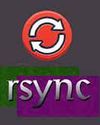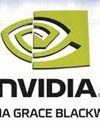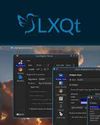
Generative AI is very exciting technology. It's like having a robot apprentice who can learn how to make art, music, and more! However, it still takes a lot of data, computing power, and learning for AI to match the creative abilities of people. But generative AI is getting better every day as it studies more examples of human creativity. The most amazing thing is that AI is not just copying work made by humans. It is able to take what it has learned and come up with new patterns, combinations, and innovations. Generative AI will help make art and content that has never been seen before!
Open-source generative AI
The code used to create open-source generative AI is available for everyone to look at, change, and use to build new things. It is not kept a secret by one company. Open source is about sharing and working together. Some examples of open-source generative AI projects are:
■ RunwayML: This helps people create new drawings, sounds, and videos with AI. You can change the code to customise the AI art!
■ StyleGAN: This AI makes realistic fake human faces. The code is public so new things can be generated.
■ Magenta: A tool from Google to make music with AI. You can build on it to train the AI in new ways.
■ TensorFlow: This popular programming library lets anyone build all kinds of AI models. Generative Als are created with it.
Some other cool open-source projects are GAN Lab, Mimetic, Lexica, and VQGAN. The code for all these is free to use and change! The benefit of open source is that anyone can learn from these projects, make them better, and create new innovations. You may be asking yourself, "Why should I choose open-source generative AI over closed-source?" The key advantage of open-source generative AI is the collaborative and transparent nature of its development.
Bu hikaye Open Source For You dergisinin March 2024 sayısından alınmıştır.
Start your 7-day Magzter GOLD free trial to access thousands of curated premium stories, and 9,000+ magazines and newspapers.
Already a subscriber ? Giriş Yap
Bu hikaye Open Source For You dergisinin March 2024 sayısından alınmıştır.
Start your 7-day Magzter GOLD free trial to access thousands of curated premium stories, and 9,000+ magazines and newspapers.
Already a subscriber? Giriş Yap

Red Hat unveils Red Hat OpenShift Virtualization Engine
Red Hat OpenShift Virtualization Engine is a new edition of Red Hat OpenShift that offers a dedicated solution for organisations to leverage the virtualisation capabilities already available within Red Hat OpenShift.

Spring AI: A Door to GenAI Heaven for Java Developers
Let's explore the Spring AI framework and its advantages, and look at how it is helping Java developers adopt AI.

Significant security vulnerabilities drive the release of Rsync 3.4
Rsync, the widely used utility for incremental file transfers and synchronisation, has released version 3.4. This update isn't packed with exciting new features but is instead critical due to several newly disclosed security vulnerabilities.

NVIDIA puts Grace Blackwell at every AI developer's fingertips
NVIDIA has introduced NVIDIA Project DIGITS, a groundbreaking personal AI supercomputer designed to empower AI researchers, data scientists, and students NVIDIA® NVIDIA GRACE BLACKWELL with the immense capabilities of the NVIDIA Grace Blackwell platform.

Top Tools for DevOps, Cybersecurity, and Cloud Management in 2025
In 2025, organisations will continue to rely on open source tools to retain a competitive edge. We look at why the best tools for DevOps, cybersecurity and cloud management will remain relevant and how best to integrate them into your organisation.

CREW: Open source platform to improve human-AI interaction
As human-AI collaboration deepens, critical questions arise: How should humans and AI complement one another? What kind of feedback enhances AI training? How can trust in AI be optimised to balance collaboration without over-reliance? Researchers at Duke University are addressing these challenges through CREW-an innovative platform designed to advance human-AI teaming.

Red Hat completes the acquisition of Neural Magic
Red Hat, Inc., has announced the completion of its acquisition of Neural Magic, a trailblazer in software and algorithms that accelerate generative AI (GenAI) inference workloads.

The Do's and Don'ts for Software Architects
Here's a list of best practices for software architects as well as the common mistakes they should try not to fall prey to.

openSUSE's Tumbleweed introduces Wayland support for the LXQt desktop environment
The openSUSE Project has announced that its Tumbleweed rolling release distribution now includes Wayland support for users of the LXQt desktop environment.

A Guide for Software Architects: Common Mistakes and Best Practices
Software architects play an invaluable role in the digital transformation of an organisation. To make a mark, they must imbibe certain qualities and avoid common errors.